The XPOL family of antennas is Poynting's line of wall/pole mounted, outdoor-rated, high-gain cellular and Wi-Fi antennas, some of which are suitable for mobile internet applications. The line includes antennas optimized for specific frequency bands as well as general-purpose, MIMO, cross-polarized, and mid-band 5G antennas. Most of the antennas in this line are directional.
Poynting is a South African-based manufacturer of antennas for wireless high-speed data applications for a variety of uses. They offer a diverse product lineup focusing on residential 4G LTE, GSM, IoT (Internet of Things), and M2M (Machine to Machine) use cases. Some of their antennas can be used for mobile applications.
Product Variations
The XPOL 5G series of antennas are the most relevant to the U.S. market, and also to 5G future-proofing.
The XPOL-2-5G-US 5G & 600 Mhz, released in Fall 2020, supports all bands up to 3.8 GHz, including Band 71. An omnidirectional version, the XPOL-1-5G was released in the summer of 2020 - but it does not support Band 71.
The XPOL-24 series 4x4 MIMO 5G/LTE was released at the end of July 2022. It has 4x4 MIMO antennas, supports Band 71, expands the coverage into the C-Band, and is a nice addition to your antenna arsenal.
The other products in this family optimize for specific bands in the cellular spectrum, support cellular frequencies that are not used in North America, or lack coverage for critical low-band frequencies.
Poynting also recently introduced an ePOYNT series of antennas similar to the XPOL series. But the ePOYNT series is an antenna enclosure, and you will have to provide your own cellular router to mount inside the enclosure.
XPOL-2
Specifications
- Model: XPOL-2
- Form Factor: Panel
- Direction: Directional
- # of Antenna Elements: 2x2 MIMO
- Frequency Range: 698MHz - 2700MHz
- Impedance: 50 ohms
- Cable Type & Length: HDF-195, 5m (16.4ft)
- Connector: SMA Male
- Dimensions (H x L x W): 10 x 10 x 3.1 inches
- Weight: 3.4 pounds
- Mounting Options: Pole mount
- Outdoor Rated: Yes
- Frequency Range/Gain:
- 698 - 960 MHz: 8 dBi
- 1710 - 2170 MHz: 6.5 dBi
- 2300 - 2400 MHz: 7 dBi
- 2500 - 2700 MHz: 9 dBi
- Special Features/Notes: Not Specified
- Retail Price: $165
XPOL 5G Series
Specifications
- Model:
- XPOL-1-5G
- XPOL-2-5G
- XPOL-2-5G-US 5G & 600 Mhz
- Form Factor: Panel
- Direction: Directional (XPOL-2-5G), Omnidirectional (XPOL-1-5G)
- # of Antenna Elements: 2x2 MIMO (4x4 MIMO available as an option in the XPOL-1-5G)
- Frequency Range: 698 - 960 or 617-960 / 1710 - 2700 / 3400-3800 MHz
- Impedance: 50 ohms
- Cable Type & Length: HDF-195, 5m (16.4ft)
- XPOL-2-5G has options for an N-type female connector with no cabling or 10m (32.8ft) of HDF-195 with SMA Male
- Connector: SMA Male
- Dimensions (H x L x W): 10 x 10 x 3.1 inches
- Weight: 3.4 pounds
- Mounting Options: Wall or Pole mount. XPOL-1-5G can also be window-mounted.
- Outdoor Rated: Yes
- Frequency Range/Gain:
- XPOL-1-5G
- 698 - 960 MHz: 11 dBi
- 1710 - 2700 MHz: 11 dBi
- 3400 - 3800 MHz: 11 dBi
- XPOL-2-5G
- 698 - 960 MHz: 9 dBi
- 1710 - 2700 MHz: 10 dBi
- 3400 - 3800 MHz: 11 dBi
- XPOL-2-5G-US 5G & 600 Mhz
- 617 - 894MHz: 9 dBi
- 1710 - 2700 MHz: 10 dBi
- 3400 - 3800 MHz: 11 dBi
- XPOL-1-5G
- Special Features/Notes: Not Specified
- Retail Price: $183-$200
XPOL-24
Specifications
- Model:
- XPOL-24-V1-01
- XPOL-24-V1-02
- Form Factor: Panel
- Direction: Directional
- # of Antenna Elements: 4x4 MIMO
- Frequency Range: 617 - 960 / 1710 - 2170 / 2300 - 2700 / 3400 - 4200 MHz
- Impedance: 50 ohms
- Cable Type & Length: HDF-195, 5m (16.4ft) / N/A on the N-Type Connector
- Connector: SMA Male / N-Type Female
- Dimensions (H x L x W): 17.5 x 11.4 x 4.3 inches
- Weight: 7 pounds
- Mounting Options: Wall or Pole mount
- Outdoor Rated: Yes
- Frequency Range/Gain:
- 617 - 960 MHz: 8.5 dBi
- 1710 - 2170 MHz: 8.5 dBi
- 3400 - 4200 MHz: 11 dBi
- Special Features/Notes: Not Specified
- Retail Price: $385
News, Videos, & Status
MobileMustHave has sent us the XPOL-2-5G-US 5G & 600 MHz for evaluation. Members can follow along here:
Videos
Alternatives to Consider
For other popular cellular antennas on the market we are tracking - here are our featured options:
This Review Contains Additional Member Exclusive Content!
We are Honored to be Member Funded! No ads, no sponsors, no selling (but may contain affiliate links)
Our members fund our in-depth independent reviews.
This entry may contain additional member exclusive content such as testing notes, field testing data, user interface tours, comparisons to alternatives, analysis, tips, videos and discounts.
Members also get interactive guidance, alerts, classroom and more.
Other Ways to Support Our Work At MIRC
Member Exclusive Content Below
- Thoughts & Analysis - Favorite Features & Potential Downsides
- Deep Dive
- Hardware Notes
- Testing Notes
- Summary
- Summary
Purchasing Options
Purchasing Links & Disclaimer
We don't sell stuff, we are primarily member funded. Some links below may be affiliate links (see our disclaimer), which also helps fund MIRC.
The vendors displayed below provide larger discounts to our MIAs that we have negotiated instead of displaying affiliate links while they are logged in.
MIA Discounts - Learn & Save!
Our Mobile Internet Aficionados (MIA) get special discounts from the below vendors. Members please check for discount codes before ordering. With savings up to 11% off, you could save more than your membership cost!
Affiliate vendor links - using these links helps support MIRC's mission (MIAs, please log in to get special discounts):
Other vendors (non-affiliate):
- 5G Store: XPOL-2-5G-US
Cellular antennas can be a vital part of your signal enhancing strategy to get a better signal, and thus better cellular data performance. They come in many shapes, sizes and varieties.
They can be used directly connected to your mobile hotspots or cellular embedded routers, or they might connect to your cellular booster. They come in omni-directional vs directional, single vs MIMO, and might support different frequency bands. They come in combination antennas with Wi-Fi and GPS.
But most importantly, is your installation options on your RV or boat.
So before choosing an antenna, be sure to understand all of these variables - and keep in mind that there likely isn't a single 'one size fits all' solution here. You may need to make compromises, or even have speciality antennas for challenging signal areas.
We recommend starting with our Guide to Selecting Antennas, and then moving on to our other guides addressing related topics:
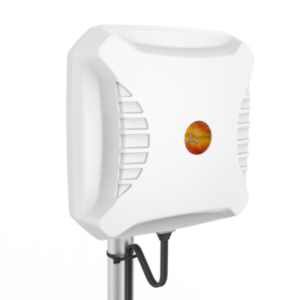
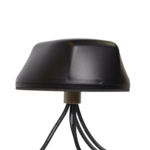







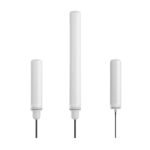
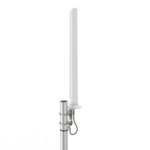

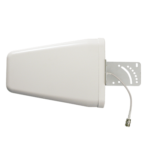



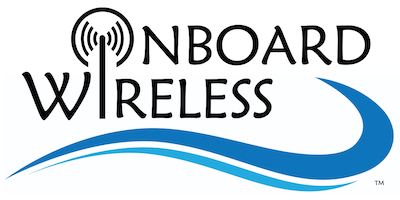


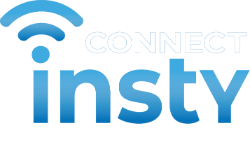
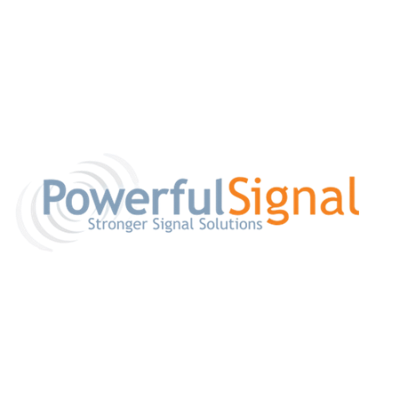


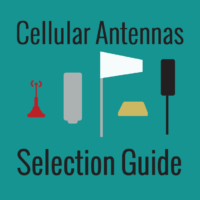


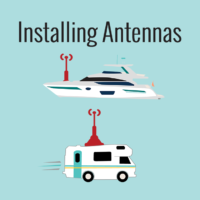









 Mobile Internet Resource Center (dba Two Steps Beyond LLC) is founded by Chris & Cherie of
Mobile Internet Resource Center (dba Two Steps Beyond LLC) is founded by Chris & Cherie of